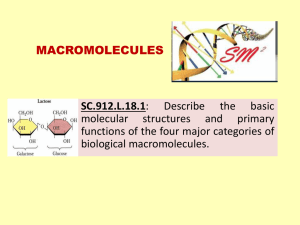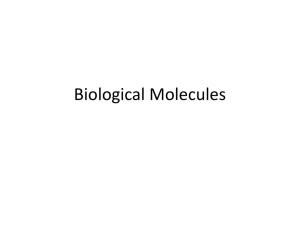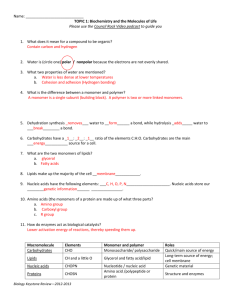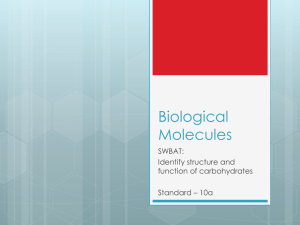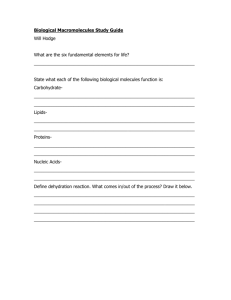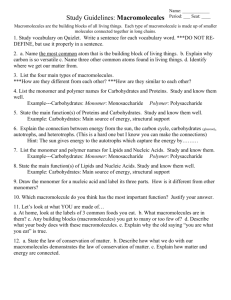Biochemistry2
advertisement
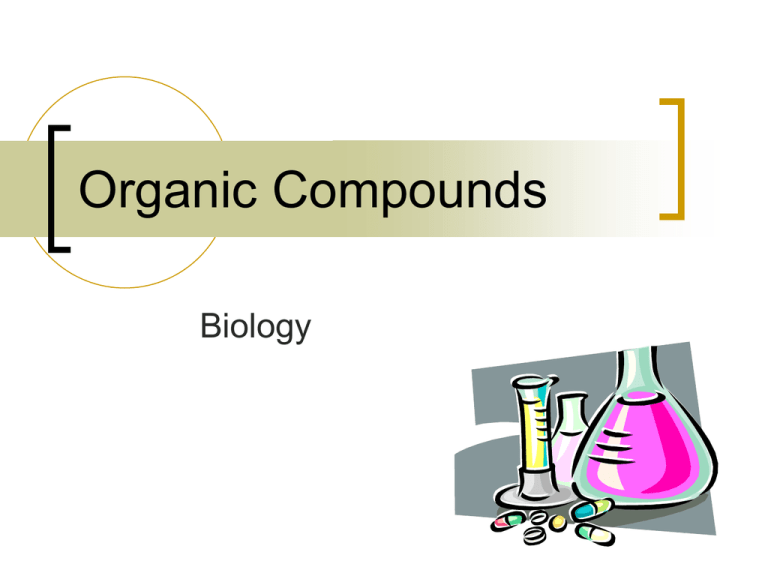
Organic Compounds Biology How is an organism organized? B E C A F D Macromolecules Macromolecules = “GIANT molecules.” Macromolecules are formed by polymerization. Large compounds (polymers) are built by joining smaller ones (monomers) together. What are monomers and polymers? This lemur is holding a monomer! Monomer—single molecules Polymer—large molecules made up of many smaller molecules (monomers) POLYMER = MACROMOLECULE What do all organic compounds have in common? They all contain CARBON! 6 C Carbon 12.011 4 Macromolecules Carbohydrates Lipids Proteins Nucleic Acids Foldable! Carbohydrates Lipids Monomer Monomer Elements Elements Function & Types Proteins Nucleic Acids Monomer Monomer Elements Elements Function & Types Carbohydrates Monomer: Monosaccharide (sugar) Polymer: Polysaccharides Elements: Carbon, hydrogen, and oxygen. Ratio- 1 : 2 : 1. Function: Main source of energy. Types: Monosaccharide (glucose) and Polysaccharides (starches). Lipids Monomer: Fatty acids and glycerol. Polymer: Lipid Elements: C, H,O Function: Store extra energy, and cell membranes. Types: Fats, oils, steroids, triglycerides, phospholipids and waxes. Nucleic Acid Monomer: Nucleotide Polymer: Nucleic Acid Elements: C, H, N, O and P Three parts: sugar, a phosphate, and a nitrogenous base. Uses: Carry and Store genetic information. Types: DNA and RNA Proteins Monomer: Amino Acids (20 types) Polymer: Protein Elements: C, H, and O. Function: Controls rate of reactions, used to form bones and muscles, transport substances into or out of cell, help fight diseases Types: Enzymes, Antibodies, Protein channels


